The Allegorical King
Character Type in
Astrology
Leo is the Zodiac sign the sun occupies when the summer is the most brilliant and warm. That’s a yearly reminder for a Leo to be proud and to stand tall in the sunlight. With the nearest star as a spotlight, who wouldn’t feel like a king?
The archetype of Leo is the king. Not in the sense of being the person in charge, necessarily, although Leo certainly doesn’t mind but would find it natural. No, this archetype is about the pride, the personality that faces the world with the confidence of someone sure to be unique, the most unique of all.
That’s why I chose the painting of King Louis XIV of France above, made by Rigaud in 1701. King Louis was famous for his brilliance, so much that he was called the Sun King (Le Roi Soleil). He knew how to shine and made sure he had a suitable palace as well as hordes of servile servants, assisting him even with the most intimate chores.
Louis was quite aware of what he was doing. By the splendor of his palace and his own majesty, he drained the aristocracy of its significance, thereby also of its power. He became a mighty king, indeed.
But don’t imagine for a second that this archetype is a male thing. When women get the chance, they prove to be as majestic as any man with a crown. A famous example is that of Queen Elizabeth I of England, who knew how to impress everyone – and make sure of their obedience.
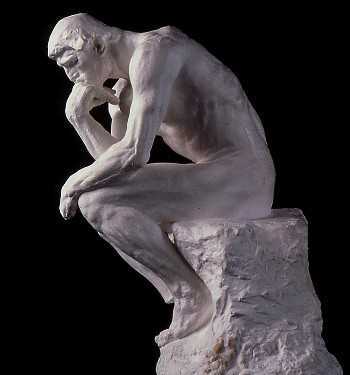
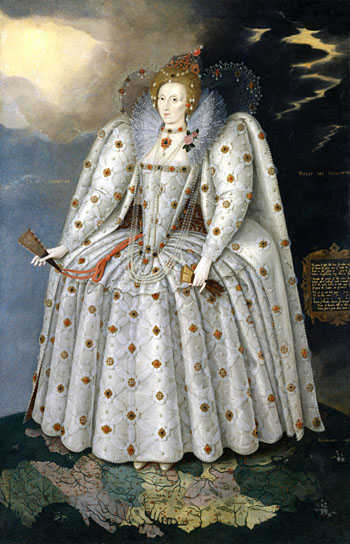
Queen Elizabeth I of England. The Ditchley portrait, by Marcus Gheeraerts the Younger, 1592.
There are other splendid examples of this majestic archetype. Those who behave as if larger than life, much larger, and making the people around them agree – not only willingly but with enthusiasm, as if it was by their appointment. Another such figure that comes to mind is the pope, who has often through history been more pompous and on a larger scale than any king. Still is.
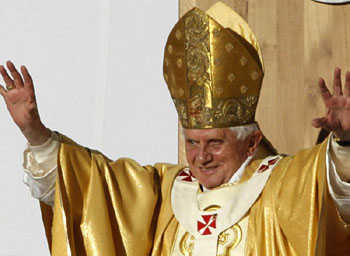
The Pope Benedict XVI, who was one of the few popes ever to resign.
The Leo archetype is about taking limitless pride in one’s own existence and talents, whatever they are. Thereby it’s the sign of self-realization. What you do for yourself, to make your time on earth worthwhile. The pompous royalty is a symbol of the prerequisite for self-realization: the trust in oneself and the delight in exploring one’s own potential.
That leads us to another relevant image of the Leo archetype. The uninhibited delight in oneself is the symptom of Narcissus of the Greek myth, who fell head over heels in love with his own reflection in the mirror of a peaceful pool of water. Narcissus is the ultimately self-occupied personality.
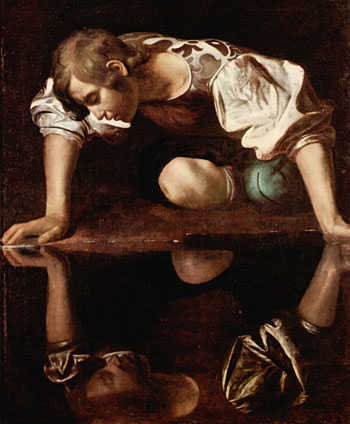
Narcissus. Painting by Caravaggio, c. 1599.
In psychiatry, narcissism is a serious diagnosis with the risk of very unfortunate outcomes – for the patient or for persons in the surroundings. But the archetype is not altogether unwanted. It’s a necessary ingredient, up to a point, in everyone who is to make something more of life than just vegetate from birth do demise. Like Jesus said, we must learn to love ourselves, or we will be incapable of loving others.
In addition, the universe works in such a way that the one able of self-love will find others attracted and seduced by it. Love is contagious.
The element to which Leo belongs is fire, and the heavenly body ruling this Zodiac sign is, of course, none but the sun. They bring the warmth and the light that Leo takes for granted. Also the symbol of the sign supports Leo’s proud self-image: the lion, the king of the wild. With its posture and its mane, it is just as majestic as any crowned human being can get.

Zodiac Archetypes
![]()
Archetype is a concept familiar already to Ancient Greece, where it was called archetupon and meant “first-moulded” – like a prototype. Plato had theories about mental ideas – or forms – that were imprinted in the human mind before birth.
The psychoanalyst C. G. Jung claimed that there is a number of archetypes that we all share, without necessarily having been taught them. They’re part of what he called our collective unconscious and influence how we look at reality. He also meant that the archetypes as inner clues to self-realization.
I’ve written more about C. G. Jung’s theory on archetypes here:
Jung’s Archetypes
The twelve signs of the Zodiac can fruitfully be seen as a system of archetypes, making a complete world of sorts – let’s say the cast of characters needed to make a play that represents human life sort of completely. The twelve characters can be seen as separate individuals making up the variety that mankind offers, or they can represent the different aspects and potentials of any one single person.
Here is more about the archetypes and how to apply them to the Zodiac signs:
Zodiac Archetypes
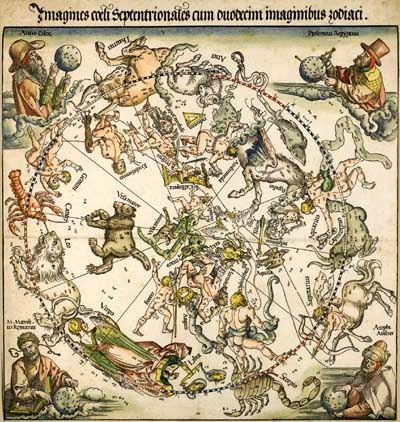
The Zodiac Star Constellations, by Albrecht Dürer.
